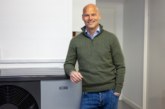
Combilift has drawn on its expertise in engineering and software design to develop the Combi-Ventilate, a splitter device which turns one ventilator into multiple ventilation stations.
Designed to address the requirements of medical professionals in the current Covid-19 emergency, the Combi-Ventilate was developed by a team of mechatronic and software engineers in the past five weeks and a unit is currently undergoing laboratory tests with Ger Curley, Professor of Anaesthesia & Critical Care at Royal College of Surgeon’s in Beaumont Hospital.
Martin McVicar, CEO and co-founder Combilift said: “Certain countries and cities are struggling to get enough ventilators and many governments and health authorities are encouraging manufacturers to come up with a solution, as did the HSE in Ireland. Instead of actually developing ventilators we analysed what is really required, as we do in our usual business models.”
The Combi-Ventilate uses standard pipes and fittings for easy assembly and its individual patient filters prevent cross contamination. Each patient has a dedicated screen which allows medical professionals to individually monitor their vital information. This includes live values, data on patient history and statistics and adjustable alarm settings. Features include non-return valves, HEPA filters, flow sensors and an automatic flow control valve. Any abnormalities that occur are detected and will only trigger that specific patient’s alarm. The Combi-Ventilate has automatically adjustable flow control valves which allow the health service professional control the tidal volume to each patient electronically without having to make manual adjustments.
“When we are developing equipment, we listen closely to our customers in order to perfect and improve the product. This approach in our collaboration with the HSE is what has got us where we are today. This is very much designed as an attachment which can be added to any brand of ventilator. It costs a fraction of a standard ventilator and can be installed very easily into an ICU unit environment. We have made Combi-Ventilate with the same objective as we do with all our products – which is all about doing more with less,” said McVicar.
“We have undertaken this non-profit endeavour in order to meet the demands of the global crisis for health services around the world, namely the lack or shortage of ventilators. The medical device sector is not our core business but making equipment which keeps people safe has always been our focus and this latest project, driven by our desire to help during these difficult times, mirrors what our research and development has done for the last 20 years.”
Minister for Business, Enterprise and Innovation, Heather Humphreys TD:
“Combilift have had huge success all over the world because their number one priority is finding solutions. That’s why it should be no surprise to see this initiative in our national and global effort to defeat Covid-19. Their hallmark as a company is innovation and adaptability, and this splitter device is testament to that. I would like to commend them on their wonderful achievement and wish them every success as they bring the product to market.”
Dr Michael Power, National Clinical Lead, Critical Care Programme Irish health service:
“The Combi-Ventilate is a valuable attachment for ventilators for use in an ICU setting in that unwanted scenario where you only have one ventilator for multiple patients. It removes that horrible dilemma. It is an engineered solution which delivers the correct volume of air to each patient safely and reliably. The Combi-Ventilate project is an example of a collaboration between the engineering and the manufacturing industry and the Health Service Executive (HSE). It is an agile project, completed in 5 weeks.”
Ronnie McDermott, National Medical Device Equipment Advisor, HSE:
“In addition to the normal concept of splitting a ventilator the Combi-Ventilate has added in monitoring and controls for each patient so that provides the clinician with assurances in using the system. It will be very useful in the developing world countries who may not have the luxury to go out and purchase many ventilators. Splitting a ventilator is now a viable solution.”









